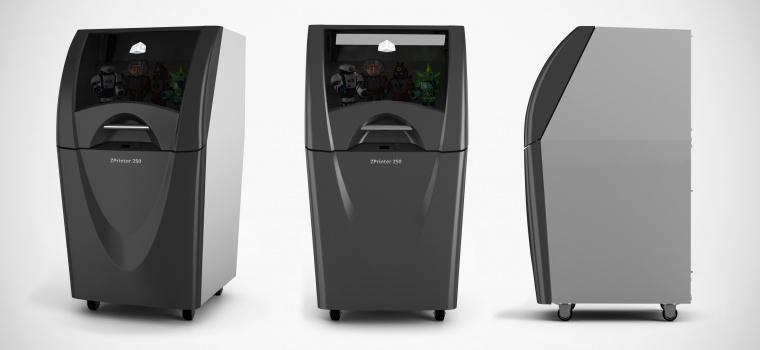
There are still questions about the amount of demand for color 3D printing, but 3D Systems evidently supports the concept, announcing a new 3D color printer.
Their new ProJet CJP 260Plus is the latest in a long line of color 3D printers marketed by the company and from the company they originally acquired color technology from, ZCorp.
The ZCorp process involved selectively jetting color ink and binder on a flat bed of fine plastic powder. By gradually building layers in this manner and bake it until solid after printing.
However, since that time, 3D Systems has incrementally improved the process, making the prints more robust and also making the colors far more vibrant. They’ve also made the process of printing and post processing somewhat more simple than that required by the original incarnation.
The ProJet CJP 260Plus is said to be “5x–10x faster than all other technologies” (meaning color 3D printing technologies, I presume). And that could indeed be the case, as there are not a lot of color 3D printing processes available. Aside from 3D Systems’ own equipment, Stratasys’ J700 and MCOR’s Arke might be the only commercially available competitors. There are a number of small-scale and experimental color projects underway, however, but none are going to have 3D Systems’ capabilities.
3D Systems also says the CJP process (which, by the way, stands for Color Jet Printing) is “7x lower cost than other technologies”. By that I suspect they mean their materials costs 7x less than Stratasys’ color resins for their J700.
The ProJet CJP 260Plus has a build volume of 236 x 185 x 127mm, which isn’t huge but likely sufficiently large to accommodate a great deal of typical prints. You must remember that the purpose of a color printer is not necessarily to produce functional parts, but instead provide a kind of “visual prototyping”, as in “I wonder how this will look in real life?”
3D Systems seems to be positioning the ProJet CJP 260Plus as a medical machine that is used to 3D print anatomical 3D models that are used for educational purposes or pre-surgery planning. Both are excellent uses of 3D technology.
In the currently limited market for color 3D printing, I wonder whether the market will grow. 3D metal printing certainly has taken off, but the same cannot be said for color 3D printing.
At least, not yet.
Via 3D Systems

